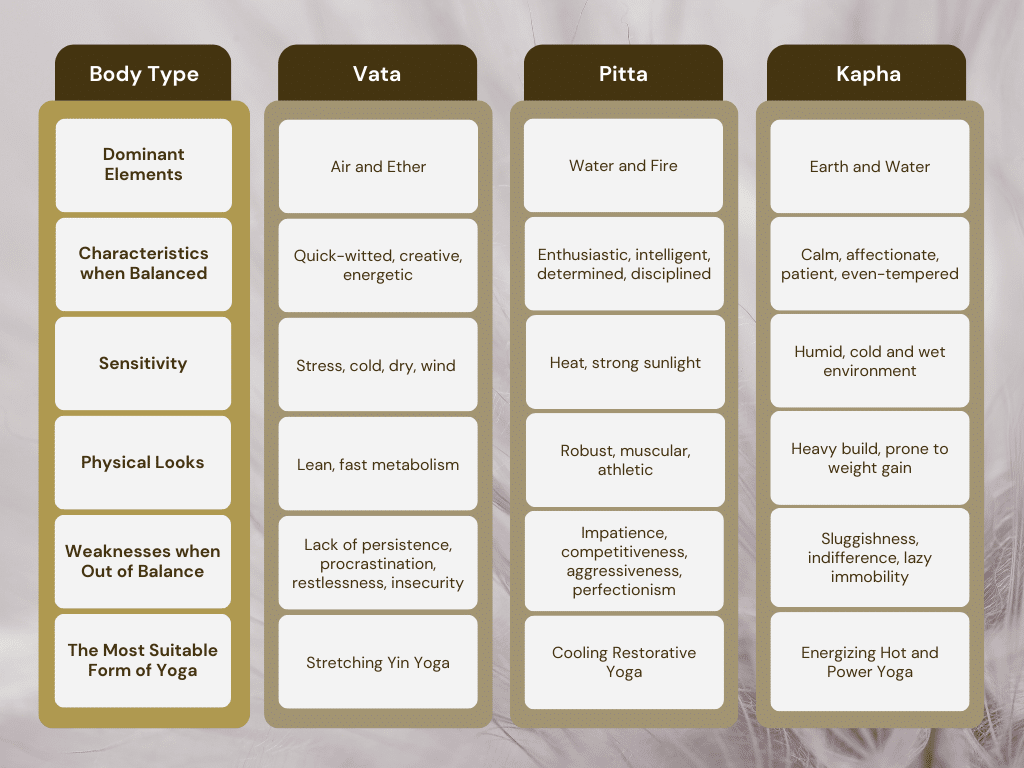
03 Sep Ayurveda & Yoga – The Perfect Pair for Your Health
Ayurveda and Yoga have in common that they can be traced back to ancient Indian scriptures, the Vedas. The two therapeutic modalities influence and reinforce each other. This is important to know, especially if you are practicing yoga with the intention of healing and want to do so in harmony with ancient traditions.
Read on to learn more about the core beliefs of Ayurveda and yoga, why they complement each other well, what Ayurvedic yoga offers, and some of the latest research.
Yoga is already widely practiced in many forms outside of Eastern culture. But in the Ayurvedic clinics of Western countries, it is clear that Ayurveda is becoming more and more recognized as an important alternative therapy.
First and foremost, the simplest approach to understanding the connection between Ayurveda and yoga is to consider yoga as an Ayurvedic therapy.

Ayurveda is known as the “science of life” based on lifestyle, diet, herbal remedies, massage and aromatherapy tailored to each patient’s unique constitution. Yoga is the application of this Ayurvedic science.
What are the core beliefs of Ayurveda and Yoga?
As for yoga, its goal is to balance the mind, body, and spirit through a variety of asanas (postures), pranayamas (breathing exercises), and meditation techniques.
According to Ayurveda, the practice of yoga helps to purify and balance the nadis. This is an important task because this vast network of channels allows the life force, also known as prana, to flow through the body.

According to Ayurvedic principles, by understanding oneself, by identifying one's own constitution, and by recognizing sources of doshic aggravation, one can not only follow the proper guidelines to cleanse, purify, and prevent disease, but also uplift oneself into a realm of awareness previously unknown.
Much like the function of nerves or blood vessels in the physical body, healthy prana is essential for a high level of vitality and spiritual existence.
Yoga is not just about holding a pose for a while and working out. Yoga has six branches or paths, each with different histories, philosophies, and intentions recommended for different body types. The body types are determined by the Ayurvedic dosha theory.
The body type theory is one of the most important parts of Ayurveda and essentially distinguishes three basic types (doshas). The three doshas – Vata, Pitta and Kapha – determine a person’s physical, emotional, mental and spiritual constitution.
There is a basic constitution (main type) that we inherit, and there are conditions that add variety to this picture. The latter always results from our current life situation.
You can determine your inherited basic constitution with the help of a test, but to determine the current constitutional type, it is advisable to seek the help of an experienced professional. Only with this knowledge can therapy begin.

Why do Ayurveda and Yoga complement each other so well?
Both yoga and ayurveda use the theories of the five elements – earth, water, fire, air, and ether – and the particular patterns of energy (doshas) that emanate from them to explain how the human body and mind work.
Yoga’s asanas and pranayamas improve physical endurance while balancing prana, which is closely related to Ayurvedic principles of health maintenance.
The integration of Ayurveda and yoga is about studying the three doshas in order to tailor yoga practices to your specific physiological and character needs.
Once you know your constitutional type – your dosha – you can begin your own personalized yoga practice. This means doing asanas that are in harmony with your type and level. This is important because having a headstand with great healing power is useless if you cannot do it properly.
Each asana has a specific effect on the doshas, similar to the effects of different foods. By choosing the right yoga practices and foods, the doshas will function well, making it also easier to lose excess weight.
What does Ayurvedic Yoga offer?
Together, these two ancient practices of yoga and ayurveda form two facets of the same holistic approach to health and wellness. Ayurvedic Yoga fuses the two belief systems to provide you with a powerful and comprehensive set of tools for both identifying and actively managing health issues.
It is recommended that you speak with a yoga therapist for the best possible health improvement. They will determine your unique doshas and create a personalized program to change your lifestyle. How much, how often, and how you want to work with the therapist will depend on your individual needs.
Keep in mind that the main focus of Ayurvedic Yoga Therapy is lifestyle modification. As such, it provides a clearer view of each area of your life rather than a quick fix.
Top Tip
As you track your progress, observe how your body and mind respond to the changes you make. The Egely Wheel, the Universal Life Energy Meter Device, can help you measure your life energy levels and bioenergetic state, which can be the key to evaluating the changes you notice.
Based on this, you can make any necessary adjustments to your lifestyle and treatment plan to ensure you receive the best possible care. By providing specific feedback on energy changes, the Egely Wheel can be a useful tool for fine-tuning your health promotion strategies.
With the right skills and information, you will eventually be able to manage the Ayurvedic treatments and lifestyle changes recommended by the therapists on your own.
Ayurveda & Yoga: What does the research say?
A 2021 study evaluated the effects of Ayurvedic medicines, lifestyle modification, and the addition of yoga to conventional treatment protocols for patients with essential hypertension over a 6-month period. They concluded that this integrated approach led to a reduction in medication dosage in 33.1% of patients and to discontinuation of medication in 36.7% of participants.
In one case study, a patient diagnosed with diabetes and hypertension underwent a special treatment program five days a week for three months. The program used yoga exercises (asanas), breathing techniques (pranayama) and deep relaxation techniques (DRT) along with Ayurvedic medicine to assess their effect on the patient’s condition. In addition to a reduction in blood pressure and blood glucose levels, subjective symptoms such as palpitations, sweating, burning sensations in the soles of the feet and palms of the hands, numbness, and general weakness improved.
What is Egely Wheel? Find out here.
Another study found that integrated yoga and Ayurveda Rasayana therapy significantly improved learning, attention, processing speed, and working memory in elderly people with mild cognitive impairment. Rasayana is one of the eight branches of Ayurveda and means that the preservation, transformation, and revitalization of life energy destroys old age and disease.
Ready to live better through Ayurvedic Yoga?
We can now appreciate the benefits of combining yoga with Ayurveda. You run the risk of turning your yoga practice into a mere workout if you are not familiar with Ayurvedic principles, and let’s face it, that is not the purpose of yoga.
Ayurveda classifies people into three body types (doshas) based on their physical characteristics as well as their emotional tendencies and behaviors. By studying how the doshas work, you can experience the positive effects of customized yoga practices on your body, mind, and spirit.
In fact, studies also show that the combination of Ayurveda and yoga helps treat a variety of diseases by having a great impact on lifestyle management and vitality. You can think of Ayurvedic yoga as a way to bring harmony to your life in four key areas: physical, mental, emotional and spiritual.
The question is: wouldn’t you love to live a more complete and harmonious life?
10 Sources +
Egely Wheel has strict sourcing guidelines and relies on peer-reviewed studies, academic research institutions, and medical associations. We avoid using tertiary references.
- Vasant Lad quotes – https://www.azquotes.com/
- What is Ayurveda Yoga Therapy? – https://www.ayurvedacollege.com/
- Yoga for balancing the doshas – https://www.ekhartyoga.com/
- The 6 branches of yoga – https://www.ekhartyoga.com/
- The best yoga practice for you, as per your body type – https://timesofindia.indiatimes.com/
- Yoga Body Types – https://yogasigns.com/
- Effect of integrated Yoga and Ayurveda Rasayana on cognitive functions in elderly with mild cognitive impairment – https://www.researchgate.net/
- Effect of Ayurveda intervention in the integrated management of essential hypertension- a retrospective observational study – https://www.researchgate.net/
- The Practice of Yoga and Ayurveda in the Management of Anxiety, Hypertension and Diabetes Mellitus – https://www.researchgate.net/
- What Is Ayurveda? – https://brahmayurveda.com/

